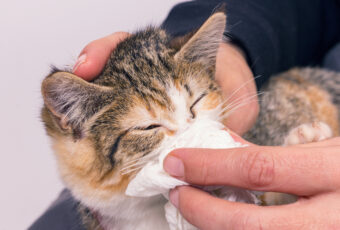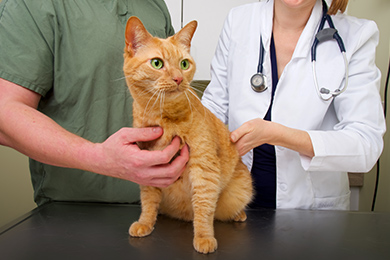chlamydia in cats transmission
Felis is considered as a primary and important agent in the etiology of infectious diseases of the upper respiratory tract and eyes in cats having zoonotic potential. Chlamydia is spread by close or.

Upper Respiratory Infection Chlamydia In Cats Petmd
Chlamydia is a disease caused by a bacterium called Chlamydophila felis.
/domestic-cat-lies-in-a-basket-with-a-knitted-blanket--looking-at-the-camera--tinted-photo--1194409229-54257cc696124a02af4a487d5102fea6.jpg)
. Transmission can occur during contact with the discharge from the nose and eyes of the cat as well as in contact with feces or urine of the animal. May 17 2019. Chlamydial conjunctivitis in cats is an infection caused by a bacterial organism.
This often happens when cats socialize and mutually groom each other although it can also occur when cats. Cats in shelters. Although the appetite and.
Feline Chlamydophila formerly Chlamydia is caused by a bacteria known as Chlamydophila felis and primarily causes conjunctivitis inflammation of the membrane lining the eyelid. Learn the causes treatment and prevention. Chlamydia In Cats Transmission.
Chlamydia is one of several upper-respiratory diseases affecting cats. The bacteria that cause feline chlamydia typically cannot survive very long away from a host so this disease usually spreads by direct contact between an infected and an uninfected animal. Chlamydia felis has low viability outside of the host so close contact between cats is required for transmission.
Psittaci var felis C. Well it is not an STD is is a bacterial respiratory infection. Although organisms have been isolated in the faeces and vaginal secretions it.
Felis doesnt survive well in the environment however it is always advisable to exercise caution when dealing with infected cats and practice routine hand washing and disinfecting to minimise the. Cats with chlamydia usually develop symptoms about 5 days after exposure. Cats in shelters catteries or those that live in close contact with others or that tend to go outdoors on a regular basis are more exposed to the pathogen.
This disease can lead to conjunctivitis which is an infection and inflammation of the conjunctiva that covers the inner surface of eyelids and the white part of the eyes. Transmission of Chlamydophila between cats occurs through direct contact with other cats or infected animals. In cats with conjunctivitis the conjunctiva becomes swollen and red.
In the first days the cat has a fever. Feline chlamydia is responsible for up to 30 of feline conjunctivitis cases. However both are highly contagious and highly treatable.
Chlamydiosis refers to a bacteria based chronic respiratory infection caused by the Chlamydia psittaci bacterium. Thats right while in humans and other species Chlamydia is a bacterium that can be transmitted through sexual contact in cats it is entirely different. Chlamydia is transmitted by airborne sexual and contact routes.
Transmission from another cat. With treatment the prognosis is positive. Chlamydia felis fall on the mucous membranes of the eyes respiratory tract and genitals of animals.
The majority of infections are caused by contact with ocular secretions with secondary transmission via direct physical contact or contaminated surfaces and fomites. Chlamydia felis does not survive outside of the host so close contact between cats is required for transmission usually via ocular discharges. Chlamydia felis is a Gram-negative bacterium that is an obligate intracellular parasite of cats.
Contact and sexual transmission are also noted. Symptoms are most severe 9 to 13 days after onset becoming mild over the next 2-3 weeks. Known as feline chlamydia its fairly common and can affect the upper respiratory system or eyes.
The cat Chlamydia is caused by the bacteria Chlamydia psittaci. Chlamydia in cats is a bacterial infection that gives rise to upper respiratory infections. The recurrence of chlamydia is a common problem especially if the cats immune system is very weak.
Cats that have developed this infection will often exhibit traditional signs of an upper respiratory infection such as watery eyes runny nose and sneezing. What is chlamydia in cats and how is it transmitted. Chlamydia in cats is transmitted most often by airborne droplets.
We investigated 13 cats aged between 2 months and 7 years in which conjunctivitis rhinitis laryngotracheitis bronchopneumonia and lymph. The incubation period of chlamydia in cats is 3-5 days and. Chlamydia in cats is a respiratory disease that is usually spread from contact with other cats.
The genus Chlamydophila contains four species C. These can last for up to several weeks even if treatment has been started. Though its rare feline chlamydia infections can potentially transfer to humans.
Chlamydia infections can be easily transmitted to other pets. For the first aid of cats eye infection you can check the ways on how to treat cats eye infection. They are two different types of bacteria.
It is caused by a bacteria called Chlamydophila felis which is contagious between cats. Transmission of and Risk Factors for Feline Chlamydia. Chlamydia in cats can manifest as the following symptoms.
Since the bacteria cannot survive in. Chlamydiosis is a common infection caused by an intracellular bacterium a bacterium that lives inside the hosts cells. The family Chlamydiae is now divided into two genera Chlamydia and Chlamydophila.
Once known as chlamydia psittaci or feline pneumonitis chlamydia has been identified in cats worldwide. Cats contract feline chlamydia from an infected cat. Human chlamydia the sexually transmitted disease is caused by the bacteria Chlamydia trachomatis.
Chlamydia in cats is caused by the bacteria Chlamydia felis. Transmission usually occurs through ocular secretions. The causative agent is immediately introduced into the cells and begins to actively multiply.
Chlamydia in cats is a bacterial infection primarily affecting the eyes which can cause conjunctivitis. The most common signs of chlamydia in cats involve the eyes or the upper respiratory tract nose or throat and only when infection is not treated does it spread to the lungs. However such infections are more rare.
Although there are different strains of the Chlamydia bacteria that infect your pet Chlamydia psittaci is the most common strain that infects felines.

Chlamydophila Felis Clinician S Brief

Chlamydia In Cats What It Is And What It Isn T Catster

Feline Upper Respiratory Infection Uri The Animal Medical Center

Feline Chlamydophila Disease Merck Animal Health Usa

Chlamydia Disease Bishops Stortford Vets

Chlamydia In Cats A Common Cause Of Feline Conjunctivitis Kingsdale Animal Hospital
/domestic-cat-lies-in-a-basket-with-a-knitted-blanket--looking-at-the-camera--tinted-photo--1194409229-54257cc696124a02af4a487d5102fea6.jpg)
Feline Calicivirus Fcv In Cats

Chlamydia In Cats What It Is And What It Isn T Catster

Feline Chlamydophila Disease Merck Animal Health Usa

Chlamydia In Cats A Common Cause Of Feline Conjunctivitis Kingsdale Animal Hospital

Chlamydia In Cats A Common Cause Of Feline Conjunctivitis Kingsdale Animal Hospital

Feline Chlamydophila Disease Merck Animal Health Usa

Feline Chlamydophila Disease Merck Animal Health Usa

Chlamydial Conjunctivitis In Cats Vca Animal Hospital

Chlamydophila Felis Infection Feline Chlamydophilosis International Cat Care
/kittens-GettyImages-119423835-f8a73e63994b4f36a0bff3953eacd04c.jpeg)


